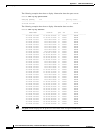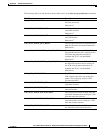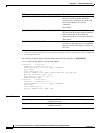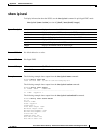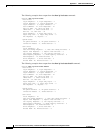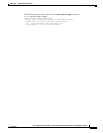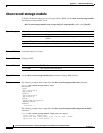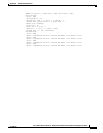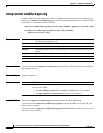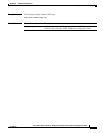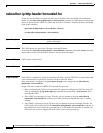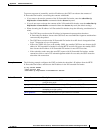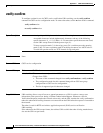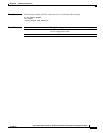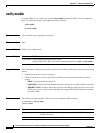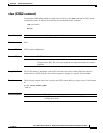
A-248
Cisco Content Services Gateway - 2nd Generation Release 2.0 Installation and Configuration Guide
OL-15491-01
Appendix A CSG2 Command Reference
snmp-server enable traps csg
snmp-server enable traps csg
To enable Simple Network Management Protocol (SNMP) notification types that are available on the
CSG2, use the snmp-server enable traps csg command in global configuration mode. To disable CSG2
notifications, use the no form of this command.
snmp-server enable traps csg [bma [records | state] | database | quota-server [records | state]]
no snmp-server enable traps csg [bma [records | state] | database |
quota-server [records | state]]
Syntax Description
Command Default If you do not enter the snmp-server enable traps csg command, no CSG2 notifications controlled by
this command are sent.
Command Modes Global configuration
Command History
Usage Guidelines Entering the snmp-server enable traps csg command enables all CSG2 SNMP traps.
If you then enter the snmp-server enable traps csg bma command, the BMA lost records and state
change traps are enabled.
If you then enter the snmp-server enable traps csg quota-server records command, the quota server
lost records trap is enabled.
bma (Optional) Enables traps for only the Billing Mediation Agents (BMAs) to which
the CSG2 sends billing records.
records (Optional) Enables only lost records traps for the BMAs.
state (Optional) Enables only state change traps for the BMAs.
database (Optional) Enables traps for only the database server that answers CSG2 user ID
queries.
quota-server (Optional) Enables traps for only the CSG2 quota servers.
records (Optional) Enables only lost records traps for the quota servers.
state (Optional) Enables only state change traps for the quota servers.
Release Modification
12.4(11)MD This command was migrated from CSG1.
Changes from CSG1:
• The bma, database, quota-server, records, and state keywords were added.
• The agent, database, and quota-server keywords were removed.



